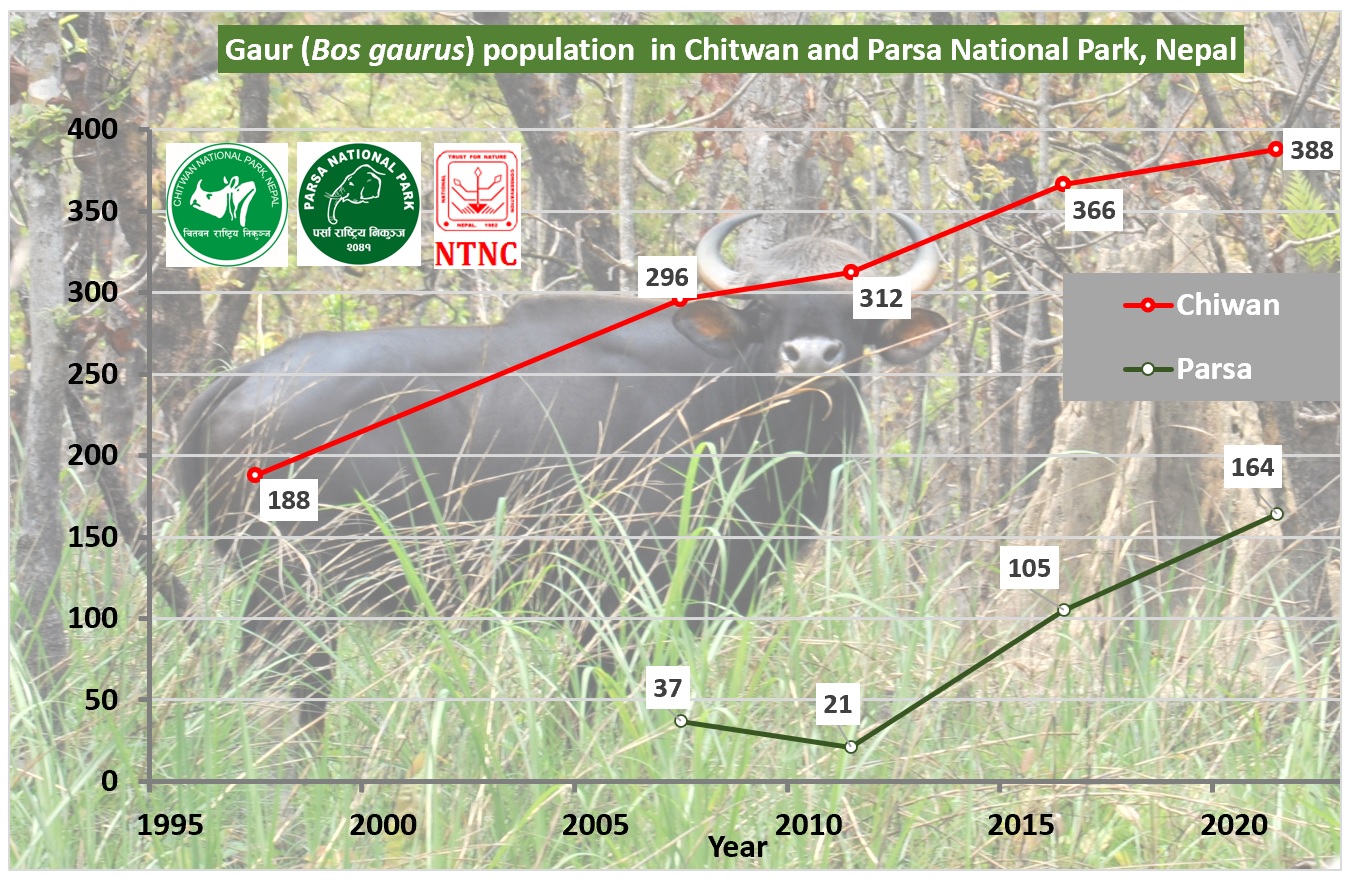Protecting Nepal’s endangered wild cattle

On the morning of 4 May, I got a call from the chief warden of Kosi Tappu Wildlife Reserve in eastern Nepal. He wanted me to verify a picture of an animal: if it was a wild ox (गौरिगाई) or a wild water buffalo (अर्ना).
The chief warden was tasked by the District Forest Officer of Udaypur with rescuing the animal that had ventured into the Khaijanpur Community Forest in Trijuga Municipality and the nearby village, straying into cowsheds and attacking two people in the process.
The team led by a forest ranger reached the site, but was unable to identify the animal in question. When I was sent a photograph they took, I immediately recognised it as a specimen of the wild ox, gaur. The ranger's team finally pushed the animal out of the village to the forest it originally came from.
This was a significant sighting because it confirmed the existence of the gaur in Eastern Nepal. We had been looking for evidence of this, but had failed to do so until now.

The sighting shows that they must be quite a few of the wild ox roaming around the forests mostly undetected in biodiversity surveys of 2018 and later. This also means how little we know about this, and perhaps even other species in Nepal.
Gaur (Latin name: Bos gaurus) is the largest bovine in the world and the third-largest mammal found in Nepal and Asia, after the Asian elephant and the greater one-horned rhinoceros. An adult gaur stands at 1.7-2.2m at its shoulder with a male weighs between 1,000-1,500kg, and a female between 700-1,000kg.
Historically, the gaur roamed throughout South and Southeast Asia. But with widespread habitat loss and fragmentation, over 80% of their range collapsed over time. Surviving populations are confined in isolated forest patches mostly inside protected areas in ten countries of South and Southeast Asia.
The gaur is in the ‘Vulnerable’ category on the IUCN Red List, and protected by law in Nepal. Globally, the population of this imposing animal is estimated at between 13,000 to 30,000.

Gaurs play an important ecological role as large grazers, especially in the Chure Range, Inner Tarai and Tarai and are concentrated in Chitwan and Parsa National Parks. They generally live in small herds of 5-12 animals, but sometimes gather in large groups of over 100 individuals.
Given their large body mass and the fact that they travel in herds means they help maintain openings within the forest and create grazing lawns which are used by other smaller herbivores like the spotted deer.
Gaurs are also a part of the diet of tigers which prefer the large body size of prey like the gaur, arna, nilgai, sambar and swamp deer, even though they are primarily consuming smaller herbivores like the chital and hog deer.
A small population is also found in the Trijuga forest in Udaypur and Saptari districts in Eastern Nepal, which was probably where the Trijuga specimen orginated. One gaur bull was brought in 1993 to Jawalakhel zoo from Jhapa District.
A survey to estimate the gaur population in Chitwan was carried out in 2021 and in Parsa this year, and reported 388 and 164 mammals respectively. Population surveys have been carried out on a regular basis in Chitwan which shows a gradual increase of the population from 188 in 1997 to 388 in 2021. Similarly, in Parsa, the population has increased from 105 to164 in the past five years.

However, their presence outside of Chitwan and Parsa National Park is now negligible. Part of the reason is the deterioration and encroachment of its natural habitat, especially outside protected areas. Fragmentation of the Chure and Tarai is further depleting their range.
They are also hunted for bushmeat, mistreated and succumb to diseases. Lack of information about their status, ecology and threats also add to the conservation challenge. Nepal's conservation priority now needs to shift from a focus on charismatic mammals like tigers and rhinos to other large but neglected mammals like gaur which are also endangered and important for the ecosystem.
The Department of National Parks and Wildlife Conservation has formulated a Gaur Conservation Action Plan for Nepal (2020-2024) to maintain the population and protect their habitat. The strategy prioritises hunting prevention, reducing disease threats, research and monitoring, protection and management of habitat as well as strengthening cooperation for gaur conservation.
Babu Ram Lamichhane is with the Natural Trust for Nature Conservation – Biodiversity Conservation Centre in Sauraha, Chitwan.
Read more: Activists decry animal slaughter at Nepal temple, Sewa Bhattarai




